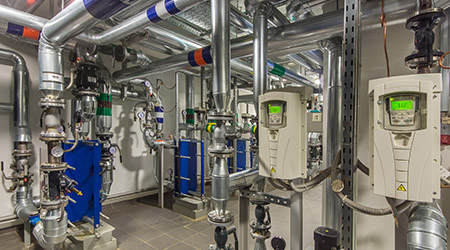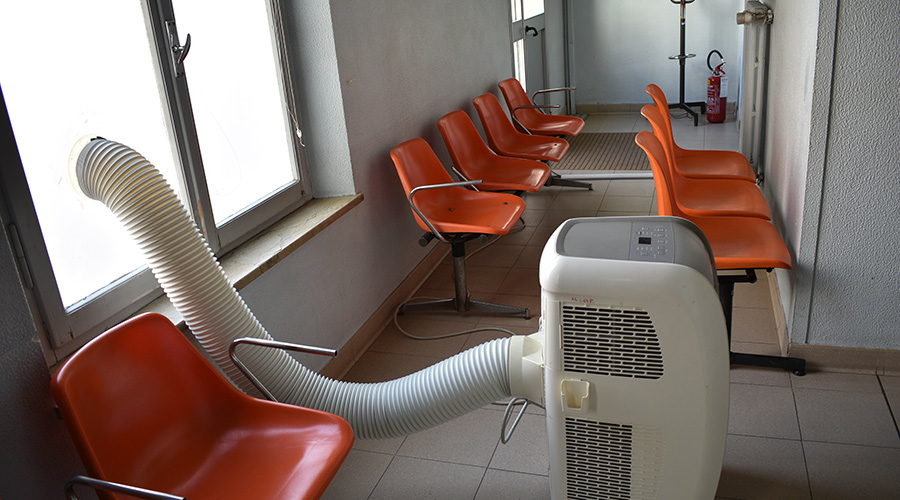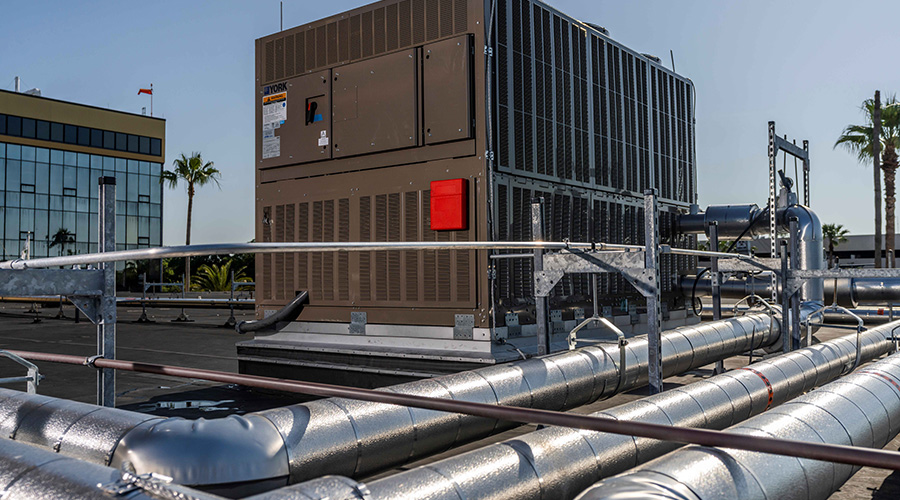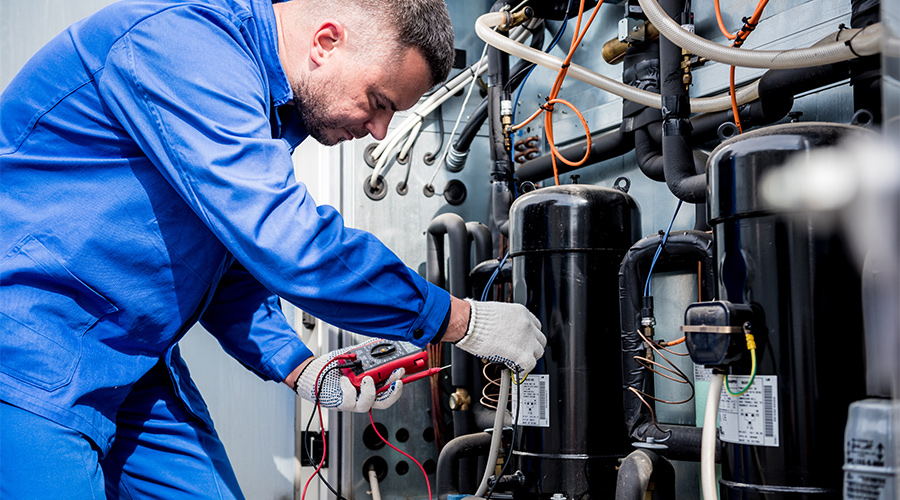7 Factors in Considering Whether to Repair or Replace Boilers
Managers need to assess a range of issues in determining the most appropriate choice for their organizations.
Boilers are one of the most essential components in institutional and commercial facilities' HVAC systems. They require a significant investment to install and maintain, and they are one of the largest energy users in a facility. Beyond these issues, the failure of a boiler during the heating season can result in disruptions to operations and major damage to the facilities and their contents. So it is no surprise that maintenance and engineering managers must pay particular attention to the operation of their facilities' boilers.
As with all facility assets, boilers have a finite service life. Even with the best of maintenance, they eventually require replacement. The challenge for managers is finding the tipping point. Is it best to repair the existing boiler, or is it time to invest in a new one? Wait too long, and the cost of boiler maintenance could become excessive, or the boiler could fail. Replace it too soon, though, and money will have been wasted.
Making the correct repair-replace decision requires that managers understand the condition of their boilers. They also must understand the way those boilers serve the facility and the facility's needs in the future. They can develop this understanding by carefully examining seven key factors concerning the boiler.
1. Age: More than a number
While boilers are long-life assets, they do not last forever. Cast iron boilers have a typical service life of 30 years or more if they are properly maintained. Condensing boilers have a service life of 15-20 years, again assuming proper maintenance. These ranges do not mean boilers will always need to be replaced when they reach their rated years of service. It is an indicator of the boiler's remaining life, a factor managers must take into consideration when facing the repair-replace decision.
Boiler maintenance costs increase as the boiler ages. Managers need to look at the trend line for the boiler’s maintenance. If it is flat, repairing it might be the best option, even if the boiler is approaching or has passed its rated service life. If the maintenance costs are relatively high and are increasing, replacing it might be the best option.
If a boiler is approaching the end of its rated service life and needs significant repairs, the age of the boiler can tip the scale towards replacement. If it is a reliability issue, though, managers need to determine the cause or causes
2. History review
A boiler's operating history is another major factor managers must consider when making the repair-replace decision. Frequent breakdowns indicate that either something is wrong with the boiler's installation or that it might no longer be reliable. If the issue is installation, such as improper piping, technicians can correct the issue before managers consider replacement.
Managers also can examine the boiler's maintenance records. Is the issue always the same, or are new issues developing? Are the issues minor and easily corrected, or are they warning signs that the chance of a major failure is on its way? Again, look at the trend line to see if the number of maintenance issues is constant or if it is increasing. Increasing maintenance requirements means increasing operating costs, a sign that the boiler might be approaching the end of its effective service life.
The biggest problem with frequent boiler breakdowns is that they tend to occur at the worst possible time — the middle of the heating season on what is usually the coldest night. If a boiler breaks down then, building systems and contents can freeze. If the damage is severe enough, it might require relocating operations to another facility while repairs are made. If the boiler has a history of breakdowns, managers must weigh the risk of potential costly damage against the cost of replacing the boiler.
3. Cost considerations
The availability of repair parts also will impact a manager’s decision to repair or replace a boiler. Manufacturers do an excellent job of maintaining an inventory of replacement components, but as they introduce new models, they gradually phase out the inventory of older model replacement parts. This can put technicians in the position of having to conduct a time-consuming search for parts they need while their boiler is down, or it can force them to fabricate a replacement part.
Many boiler repairs can be made using generic parts, such as valves and gauges, but some require OEM parts. Managers must take this into consideration when evaluating the repair-replace decision. Will they be able to get what they need when they need it? If so, what will it cost?
Assuming technicians can obtain the required parts, managers need to weigh the cost of repair against the cost to replace the boiler. In most cases, the repair cost will be a small fraction of the replacement cost, so it makes sense to perform the necessary repairs.
But in some instances, such as a required major overhaul of a boiler, the repair cost can be as much as one-quarter to one-half of the cost for a replacement boiler. In these cases, particularly if the boiler is approaching its rated service life, managers must consider other issues to determine if the boiler is worth repairing.
4. Eye on efficiency
Reducing energy costs has long been a goal for managers. Because boilers are one of the largest energy users in facilities, managers have appropriately focused attention on boiler efficiency. It is natural for a boiler’s efficiency to drop off with age, even if it is properly maintained.
Parts wear. Scale slowly builds on heat-transfer surfaces. Past repairs, even when properly performed, might further reduce efficiency. Tests on a typical 30-year-old boiler show an operating efficiency of 70 percent or less. A new condensing boiler can have an efficiency of 95 percent.
The potential energy savings managers can achieve by replacing a boiler can make it worthwhile to replace an existing boiler, even if it is in good operating condition. But before making that replacement decision, managers should analyze future energy costs for each system for a typical year. Energy savings alone might not be enough to warrant replacement, but with other factors, efficiency might be enough to tip the scale.
5. Safety spotlight
Safety is important when evaluating a boiler for repair or replacement. Older boilers most likely do not meet current regulations for safety and operation, and while managers might not be required to bring an existing boiler up to current requirements, safety is a factor when considering repair or replacement.
Technicians need to test all boiler safety devices regularly to confirm their proper operation. Managers also need to consider working with a boiler professional to evaluate the safe operation of an existing boiler. Based on the recommendations, managers can evaluate whether the more appropriate move is to make changes to the existing boiler to improve safety or to install a new boiler that meets current regulations.
6. Configuration issues
A typical boiler installation in a larger facility consists of one or two large boilers. Each boiler is sized so it can carry the heating load most of the time, and the other boiler serves as a backup. While this system works well to meet the heating requirements of the facility, it is not the most efficient configuration.
Boilers can adjust their firing rate to meet varying loads. If the load falls below a unit's minimum firing rate, the boiler might switch off temporarily. This cycling decreases operating efficiency and is hard on boiler components due to temperature swings.
Boilers do not have to be replaced in kind. Instead of replacing a failing unit one for one, managers can consider installing multiple smaller boilers and staging them so that as the heating load increases, additional boilers come online. This strategy allows managers to match boiler capacity more readily to the heating load, eliminating cycling and improving operating efficiency. Multiple smaller boilers also improve system reliability because the failure of one unit will not significantly impact heating capacity.
7. Technology talk
Innovation in boiler designs is ongoing. Digital technology has replaced mechanical controls in new-generation boilers, allowing technicians to control boiler operation remotely. Major improvements in boiler design have resulted in higher operating efficiencies.
By considering these seven factors when evaluating the boiler repair-replacement option, managers can make the repair or replace decision from a position of understanding. They can more successfully factor in the current and future needs of the facility, the condition of the existing boilers, the cost of continuing to repair the existing boilers, and the installed cost of a new system. By evaluating each factor, managers can identify the best option for their applications.
James Piper, P.E., is a national consultant based in Bowie, Md. He has more than 30 years of experience with facilities maintenance, engineering, and management issues.
Related Topics:












